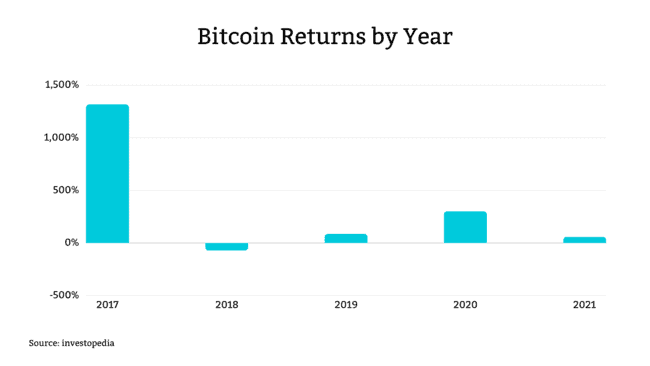AI-Powered Trading: Real-Time Insights for Bitcoin and Stocks

Artificial intelligence (AI) and machine learning have transformed the world of trading and investing. AI-based algorithms can analyze vast amounts of real-time data, identify patterns and opportunities, and execute trades more quickly than any human. This technology offers traders invaluable insights and has leveled the playing field against institutional investors.
AI-Powered Insights for Bitcoin Trading
Here are some key ways traders are utilizing AI algorithms specifically in Bitcoin and cryptocurrency markets:
Identifying Support/Resistance Levels
AI analyzes price charts and historical data to detect support and resistance levels based on recurring patterns. This reveals optimal entry and exit points for trades. Deep learning models can uncover subtle hints about strength and weakness around these key levels that even seasoned technical analysts may miss.
Spotting Breakouts
Outlier detection algorithms can discover trend changes and breakouts earlier than humans based on minute-to-minute analysis of real-time price, volume, and volatility data across exchanges using real-time charting software. By establishing mathematical definitions for abnormal price activity, AI can automatically flag outliers and quickly determine if they represent tradable breakouts or false signals.
Analyzing On-Chain Activity
By continuously monitoring activity on the underlying blockchain network, AI models can uncover meaningful shifts in supply dynamics, miner behaviors, whale movements, and more that impact prices. This provides an information edge to traders. However, not all on-chain data is immediately relevant, so feature engineering and dimensionality reduction techniques are crucial to surface the most actionable signals.
Quantifying Market Sentiment
Natural language processing examines conversations across social media, news articles, Reddit forums, Twitter, and other sources to quantify positive or negative Bitcoin market sentiment. This can anticipate rising or falling bitcoin kurs. Contextual understanding of emotion, slang, sarcasm and complex linguistic concepts remains challenging for AI, so thoughtful data filtering is critical.
Event-Driven Trading
AI algorithms rapidly scan thousands of sources to link breaking news events to trading opportunities in mere seconds, before markets fully react. This allows profiting from short-term volatility. Determining the likely market impact of news – from minor to catastrophic – is extremely complex. But recurrent neural networks show promise at continual self-improvement of event classification models.
Algorithmic Portfolio Balancing
By holistically assessing risk metrics across an entire portfolio, AI systems can automatically rebalance holdings to optimize for preferred Exposure levels to various crypto assets. This enables hands-free maintenance of target allocations to Bitcoin, Ethereum, stablecoins, sector-specific tokens, etc.
AI Analytics for Stock Market Investing
AI is advancing stock market analysis and active investing in similar ways:
Portfolio Optimization
Advanced machine learning algorithms can optimize portfolios of stocks, ETFs, options for maximum returns based on mathematical simulations using expected risks and returns data. Monte Carlo methods allow extensive backtesting of portfolio combinations under varying market conditions. Human biases often impede ideal portfolio construction.
Price Forecasting Models
Sophisticated deep neural networks can be trained on decades of historical stock data to uncover non-linear patterns difficult for linear regression models. Combined with natural language processing to correlate breaking developments with price movements, remarkably accurate price forecasting is attainable. But markets evolve rapidly, so continual model updating is imperative.
Risk Modeling
Statistical AI programs build correlations between securities based on historical datasets to quantify risks across assets. This empowers informed position sizing. Care is required when stress testing risk models on out-of-sample data to confirm stability since markets do not perfectly repeat cycles seen in the past.
Sentiment & Momentum Tracking
Powerful sentiment analysis techniques can uncover rising or falling momentum before prices reflect, allowing trading ahead of rapid stock price movements. But contextual parsing of bullish vs. bearish statements remains an AI challenge. Clean datasets with rigorously labeled sentiment are key for accuracy.
Generating Trading Ideas
Natural language AI can parse news articles, financial filings, regulatory reports and more unstructured text sources to automatically surface financially relevant company events. These may present lucrative trading ideas before reflecting fully in stock prices. Separating truly impactful events from noise is the obstacle.
Also Read: 5 Keys To Safe Trading In The Currency Market
Trade Execution Automation
Once an investment decision is made, AI algorithms enable instant, precise automated order execution at optimal prices. This eliminates emotional hesitation and second guessing for disciplined follow-through. But system safeguards are imperative to prevent unintended cascading market impacts from runaway algorithms.
Algorithmic Technical Analysis
While most humans conduct technical analysis manually across a limited universe of charted assets, AI expands this exponentially across thousands of tickers. Indicators like money flow, moving averages, RSI, and candlestick formations can be monitored to rapidly flag trading signals. The challenge is filtering quality buy and sell alerts.
Uncovering Hidden Statistical Arbitrages
By continually analyzing correlations between related securities, AI algorithms can discover fleeting price inefficiencies and arbitrage opportunities. These allow low-risk trades profiting from temporary distortions, augmented by automated order execution. However, competitive arbitrage shrinks alpha rapidly during market shocks.
FAQs
Here are answers to some frequently asked questions about AI in trading:
What are the main benefits AI offers traders & investors?
The biggest benefits AI provides over human analysis are real-time data analysis at enormous scale, predictive analytics and pattern recognition from vast historical datasets, lightning-fast automated order execution, and uncovering insights that no individual could on their own across news, social media, regulatory filings and many other information sources.
What types of trading strategies benefit the most from AI?
Algorithmic high-frequency trading, quantitative strategies, event-driven strategies focused on short-term volatility, arbitrage opportunities across assets, and advanced position management all derive immense benefits from applied artificial intelligence. Passive index tracking sees less incremental advantage.
Are there any downsides or risks associated with using AI for trading?
Allowing unmonitored black-box AI algorithms to make unfettered trading decisions can indeed be risky if not built with care, properly backtested, and actively monitored. Poor data quality, overfitting models to historical data, hidden biases in data, and programming errors could all lead AI programs to execute harmful trading behavior if governance is inadequate. Adopting AI requires rigorous validation.
How can traders combine AI with their own human analysis?
Savvy traders are discovering that combining subjective human intuition and knowledge with the scale and automation AI provides can outperform either working in isolation. With technologies like conversational AI assistants that generate ideas side-by-side based on analytical model outputs, this hybrid approach looks promising to take the best of human and machine intelligence.
What are some leading companies applying AI to trading & investing?
Top firms like Renaissance Technologies, Two Sigma, QuantConnect, MathWorks, Nansen, and EPFR fund managers incorporate various forms of machine learning or AI to enhance quantitative modeling, backtesting, risk analysis, portfolio optimization, and trade execution automation. Retail algorithmic trading platforms also increasingly provide access to AI technologies.
Is AI used more in short-term trading vs long-term investing?
Currently, AI is generally more applicable to high-frequency trading, derivatives pricing, arbitrage, and opportunistic trading strategies, rather than long-term fundamental value analysis or passive index investing. However, forecasting stock fundamentals over longer time horizons is an active area of AI research that may benefit long-term investors someday soon.
Conclusion
In closing, AI and machine learning have already begun transforming financial trading activities, unlocking speed, scale and insights previously out of reach. As algorithms grow more powerful, AI is sure to expand further across global markets. Like most technologies however, its impact depends greatly on how judiciously it is applied and governed. With responsible development, AI promises to keep advancing financial analytic abilities to new frontiers.







